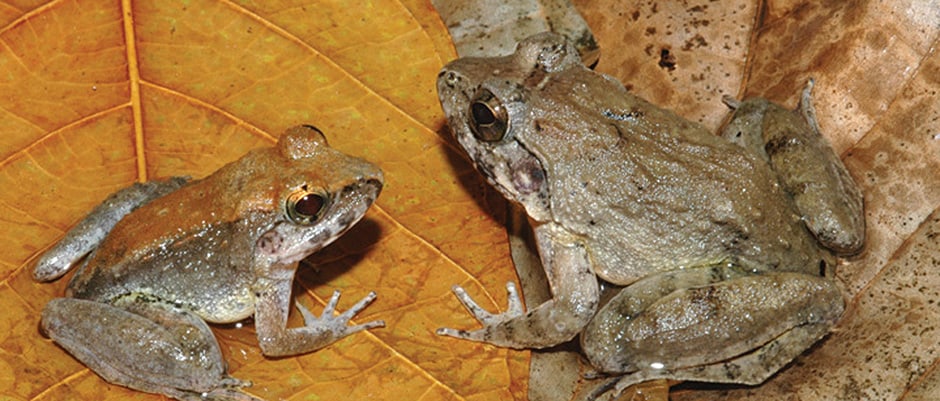Share this article
Asian Fanged Frog Gives Birth to Tadpoles
On Sulawesi, an island in central Indonesia, Jim McGuire searched for Limnonectes larvaepartus, a small species of fanged frog with a unique strategy for reproduction. McGuire, a herpetologist with the Museum of Vertebrate Zoology and the University of California, Berkley, had returned with his research team to a spot where he knew the frogs would likely be. When he found a frog sitting in a puddle, he was worried the activity around him would cause the frog to hop away, so McGuire reached down to pick it up, and “out came tadpoles into my hands,” he said. McGuire experienced first hand the pregnant fanged frog giving birth to tadpoles instead of laying eggs — the only frog known to do so, according to a new online study published in Plos One.
That the female L. larvaepartus gave birth to tadpoles that day wasn’t a surprise for McGuire. In fact, he was looking for it. His colleague and lead author of the study, Djoko Iskandar, first suspected these frogs gave birth to tadpoles in the late 1980s. More than a decade later in 2001, McGuire and his team would see for the first time tadpoles inside a female’s abdominal cavity as they opened a specimen up to take a tissue sample for genetic work.
One of McGuire’s research goals is to understand how animals on Sulawesi became different species. The island itself used to be multiple islands that merged eight to ten million years ago, and McGuire thinks this has had an important impact on how species have diversified there. Fanged frogs are a slice of that work. As many as 25 different fanged frog species may live on the island, according to McGuire, though only four have been formally described by scientists. Genetic analysis will, among other things, help the researchers distinguish between different species.
“We make a little assembly line when we are preparing specimens, so one of my grad students was actually gearing the tissuing of the frogs,” said McGuire. “He made the incision on the side of the frog and out came the tadpoles.” Since then, the researchers have observed 19 examples of L. larvaepartus females pregnant with tadpoles.
“One of the really cool things about frog evolution more generally is that there have been many, many tweaks in reproductive modes.” From guarding eggs on land to carrying tadpoles in vocal sacs, there are about 40 different reproductive modes for frogs. However, of the 6,455 species only about a dozen reproduce using internal fertilization, where the male fertilizes eggs that are inside the female. Most of those species give birth to froglets. Only L. larvaepartus uses internal fertilization and gives birth to tadpoles.
Future research may take a closer look at this species, but scientists are also interested in looking at the reproductive methods of other fanged frog species on the island. “We don’t even know what the reproductive modes are for most of these 25 or so species,” said McGuire. “One of the things we need to do is get in the field and actually observe reproduction in more of these frog species so we have a better handle of what’s happened in an evolutionary sense.”
Header Image: Image Credit: Jim McGuire








